Abstract
In common with other zwitterionic quarternary ammonium compounds (QACs), glycine betaine acts as an osmoprotectant in plants, bacteria, and animals, with its accumulation in the cytoplasm reducing adverse effects of salinity and drought. For this reason, the glycine betaine biosynthesis pathway has become a target for genetic engineering of stress tolerance in crop plants. Besides glycine betaine, several other QAC osmoprotectants have been reported to accumulate among flowering plants, although little is known about their distribution, evolution, or adaptive value. We show here that various taxa of the highly stress-tolerant family Plumbaginaceae have evolved four QACs, which supplement or replace glycine betaine-namely, choline O-sulfate and the betaines of beta-alanine, proline, and hydroxyproline. Evidence from bacterial bioassays demonstrates that these QACs function no better than glycine betaine as osmoprotectants. However, the distribution of QACs among diverse members of the Plumbaginaceae adapted to different types of habitat indicates that different QACs could have selective advantages in particular stress environments. Specifically, choline O-sulfate can function in sulfate detoxification as well as in osmoprotection, beta-alanine betaine may be superior to glycine betaine in hypoxic saline conditions, and proline-derived betaines may be beneficial in chronically dry environments. We conclude that the evolution of osmoprotectant diversity within the Plumbaginaceae suggests additional possibilities to explore in the metabolic engineering of stress tolerance in crops.
Full text
PDF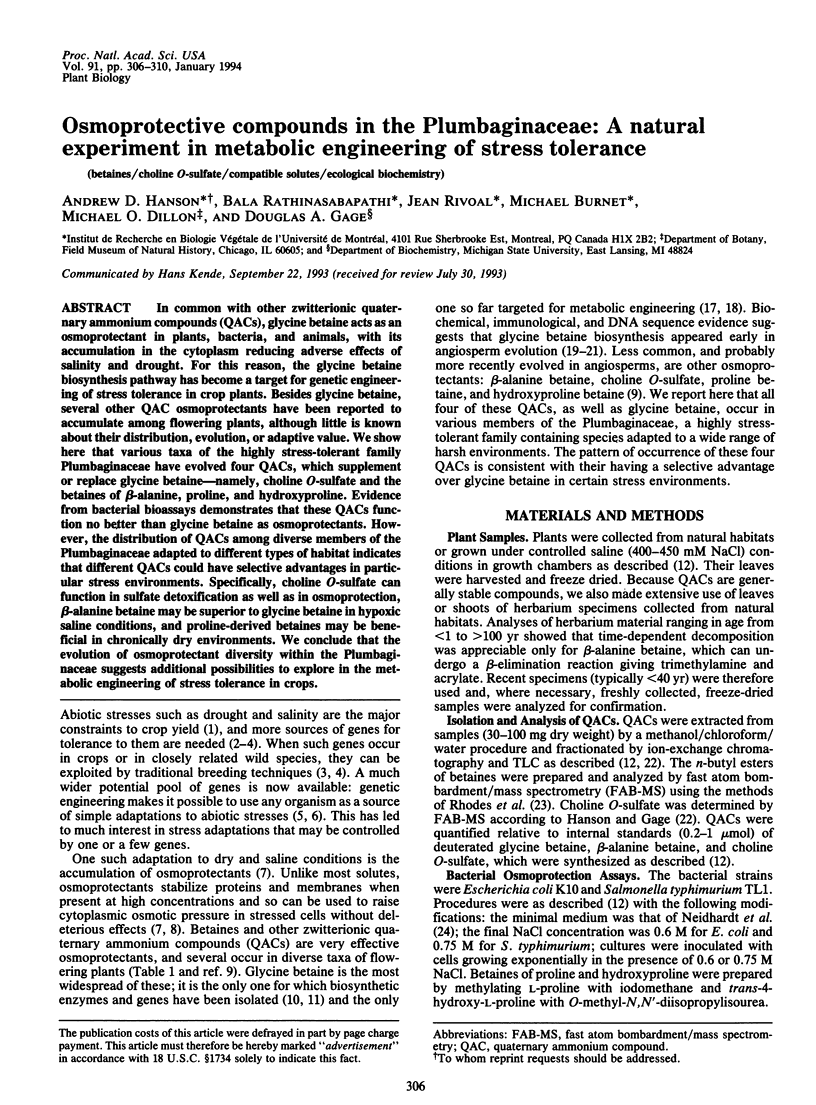
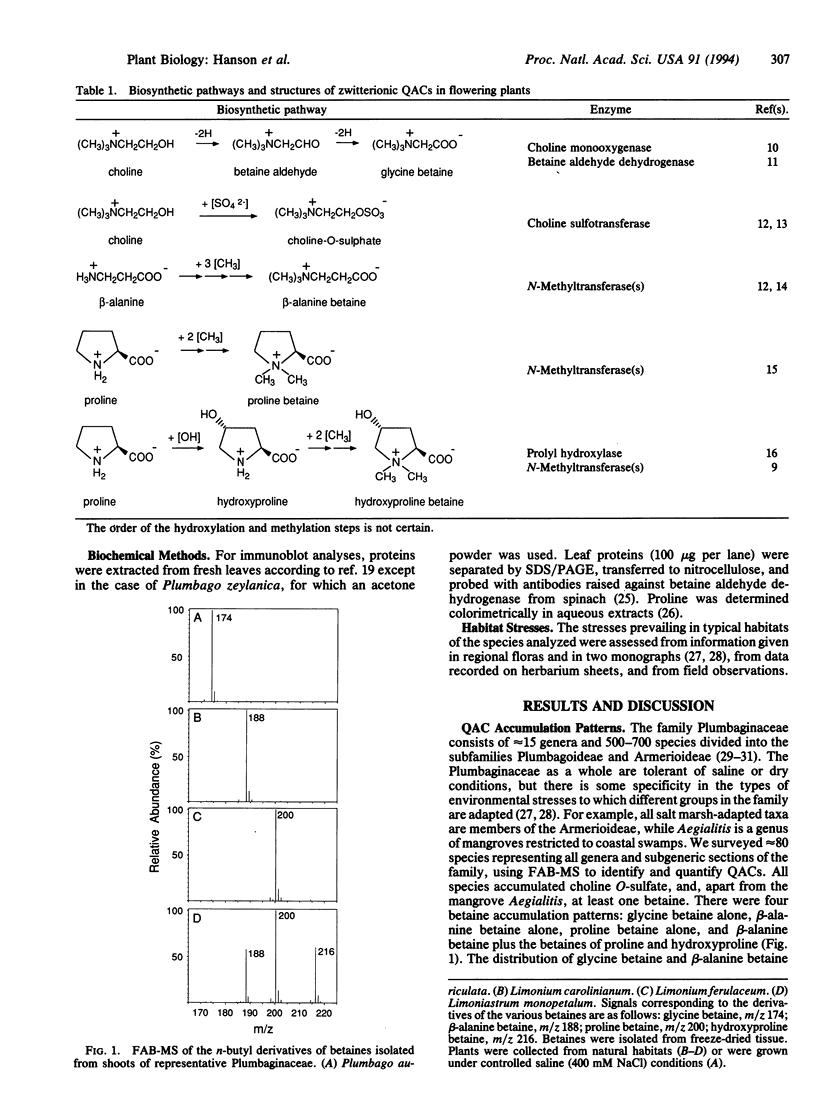
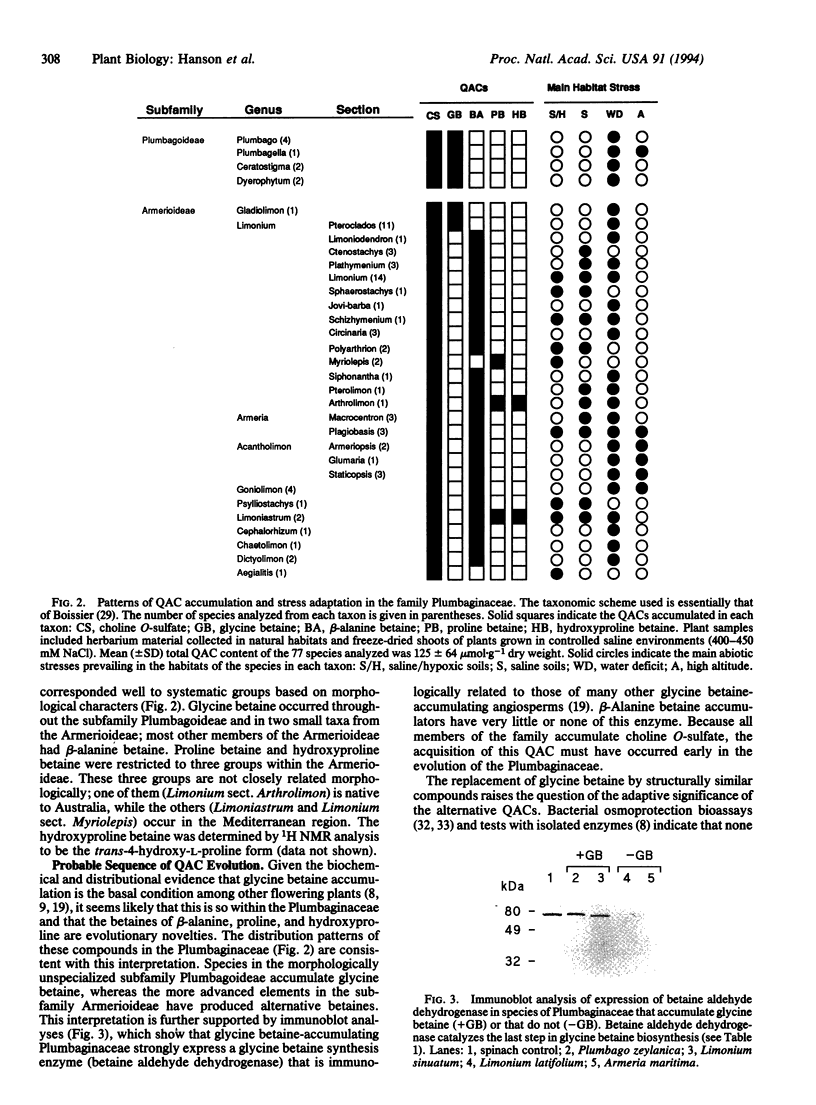
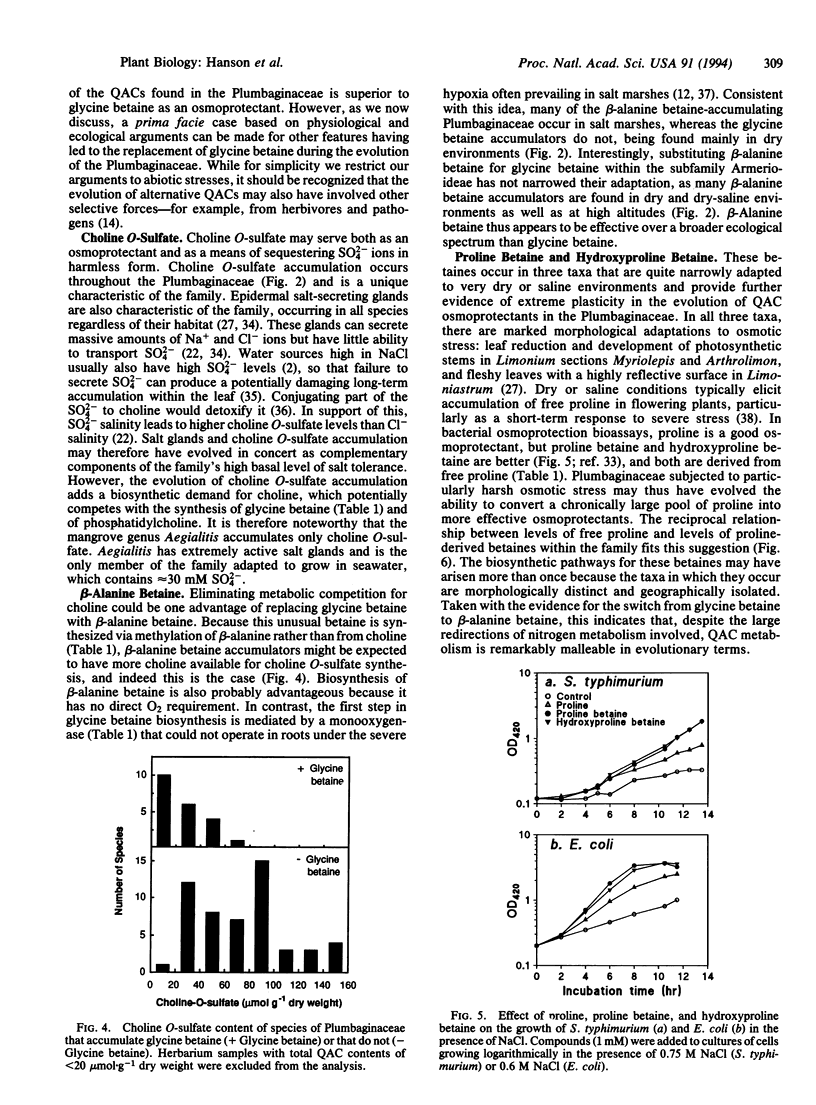
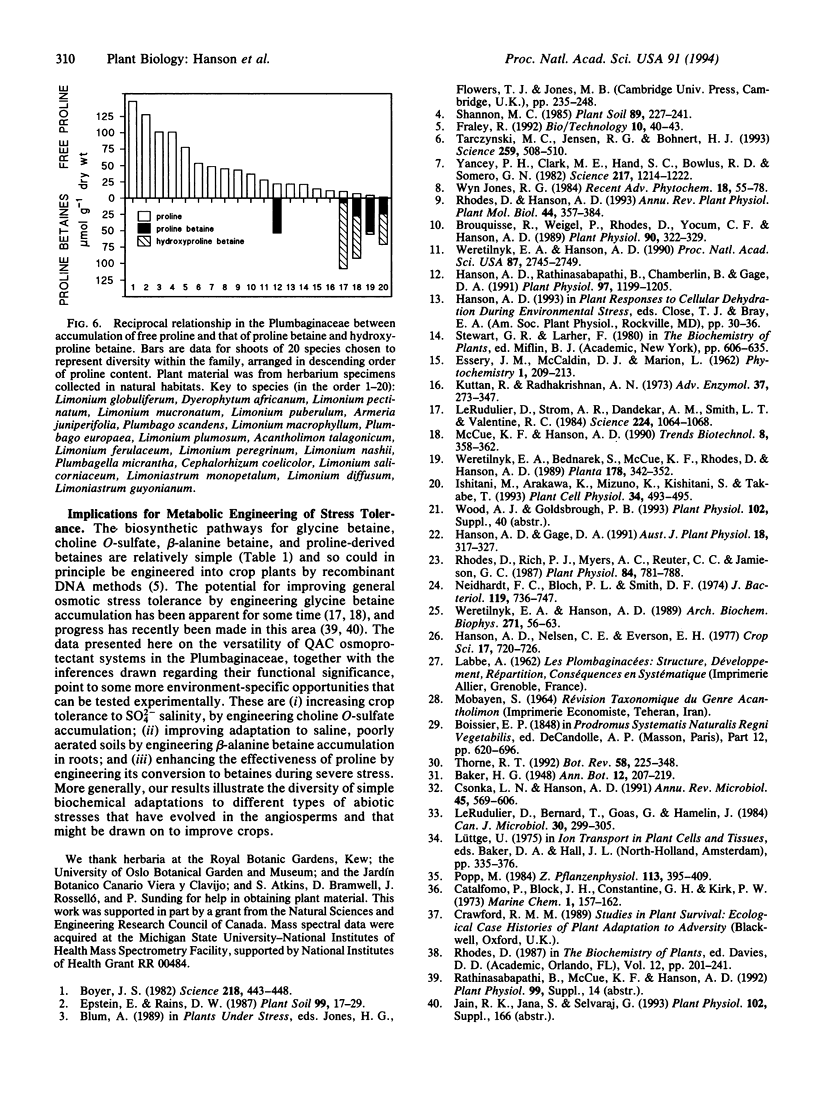
Images in this article
Selected References
These references are in PubMed. This may not be the complete list of references from this article.
- Boyer J. S. Plant productivity and environment. Science. 1982 Oct 29;218(4571):443–448. doi: 10.1126/science.218.4571.443. [DOI] [PubMed] [Google Scholar]
- Csonka L. N., Hanson A. D. Prokaryotic osmoregulation: genetics and physiology. Annu Rev Microbiol. 1991;45:569–606. doi: 10.1146/annurev.mi.45.100191.003033. [DOI] [PubMed] [Google Scholar]
- Hanson A. D., Rathinasabapathi B., Chamberlin B., Gage D. A. Comparative Physiological Evidence that beta-Alanine Betaine and Choline-O-Sulfate Act as Compatible Osmolytes in Halophytic Limonium Species. Plant Physiol. 1991 Nov;97(3):1199–1205. doi: 10.1104/pp.97.3.1199. [DOI] [PMC free article] [PubMed] [Google Scholar]
- Kuttan R., Radhakrishnan A. N. Biochemistry of the hydroxyprolines. Adv Enzymol Relat Areas Mol Biol. 1973;37:273–347. doi: 10.1002/9780470122822.ch5. [DOI] [PubMed] [Google Scholar]
- Le Rudulier D., Bernard T., Goas G., Hamelin J. Osmoregulation in Klebsiella pneumoniae: enhancement of anaerobic growth and nitrogen fixation under stress by proline betaine, gamma-butyrobetaine, and other related compounds. Can J Microbiol. 1984 Mar;30(3):299–305. doi: 10.1139/m84-045. [DOI] [PubMed] [Google Scholar]
- Le Rudulier D., Strom A. R., Dandekar A. M., Smith L. T., Valentine R. C. Molecular biology of osmoregulation. Science. 1984 Jun 8;224(4653):1064–1068. doi: 10.1126/science.224.4653.1064. [DOI] [PubMed] [Google Scholar]
- Neidhardt F. C., Bloch P. L., Smith D. F. Culture medium for enterobacteria. J Bacteriol. 1974 Sep;119(3):736–747. doi: 10.1128/jb.119.3.736-747.1974. [DOI] [PMC free article] [PubMed] [Google Scholar]
- Rhodes D., Rich P. J., Myers A. C., Reuter C. C., Jamieson G. C. Determination of Betaines by Fast Atom Bombardment Mass Spectrometry : Identification of Glycine Betaine Deficient Genotypes of Zea mays. Plant Physiol. 1987 Jul;84(3):781–788. doi: 10.1104/pp.84.3.781. [DOI] [PMC free article] [PubMed] [Google Scholar]
- Tarczynski M. C., Jensen R. G., Bohnert H. J. Stress protection of transgenic tobacco by production of the osmolyte mannitol. Science. 1993 Jan 22;259(5094):508–510. doi: 10.1126/science.259.5094.508. [DOI] [PubMed] [Google Scholar]
- Weretilnyk E. A., Hanson A. D. Betaine aldehyde dehydrogenase from spinach leaves: purification, in vitro translation of the mRNA, and regulation by salinity. Arch Biochem Biophys. 1989 May 15;271(1):56–63. doi: 10.1016/0003-9861(89)90255-5. [DOI] [PubMed] [Google Scholar]
- Weretilnyk E. A., Hanson A. D. Molecular cloning of a plant betaine-aldehyde dehydrogenase, an enzyme implicated in adaptation to salinity and drought. Proc Natl Acad Sci U S A. 1990 Apr;87(7):2745–2749. doi: 10.1073/pnas.87.7.2745. [DOI] [PMC free article] [PubMed] [Google Scholar]
- Yancey P. H., Clark M. E., Hand S. C., Bowlus R. D., Somero G. N. Living with water stress: evolution of osmolyte systems. Science. 1982 Sep 24;217(4566):1214–1222. doi: 10.1126/science.7112124. [DOI] [PubMed] [Google Scholar]



